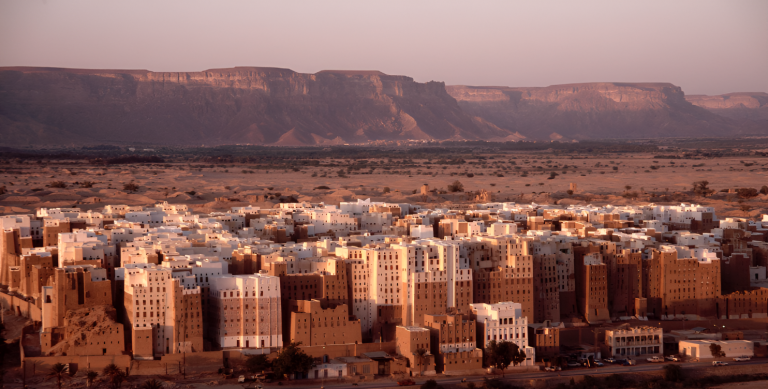In Yemen’s Wadi Ḥaḍramawt, the town of Shibam rises like a skyline made of clay, with mud towers reaching five, eight, or even eleven stories high. It looks almost futuristic, but it’s very old.
Shibam became the capital of Hadramaut after Shabwa was destroyed around 300 AD. It took over a kingdom that once ruled South Arabia and thrived on frankincense and myrrh trade.
The Capital of Hadramaut
As Hadramaut’s new capital, Shibam ruled over a land both rich and fragile. The kingdom had long grown wealthy from incense caravans traveling to the Mediterranean and Mesopotamia. Greek and Roman writers spoke of its riches, and inscriptions and ruins show its influence.
Becoming the capital, Shibam took on this role in trade and governance. It grew into a fortified city, its towers serving as protection against raids from rival tribes and outside powers. Leadership changed hands over time, but Shibam stayed steady — a walled guardian of Hadrami identity at the valley’s heart.
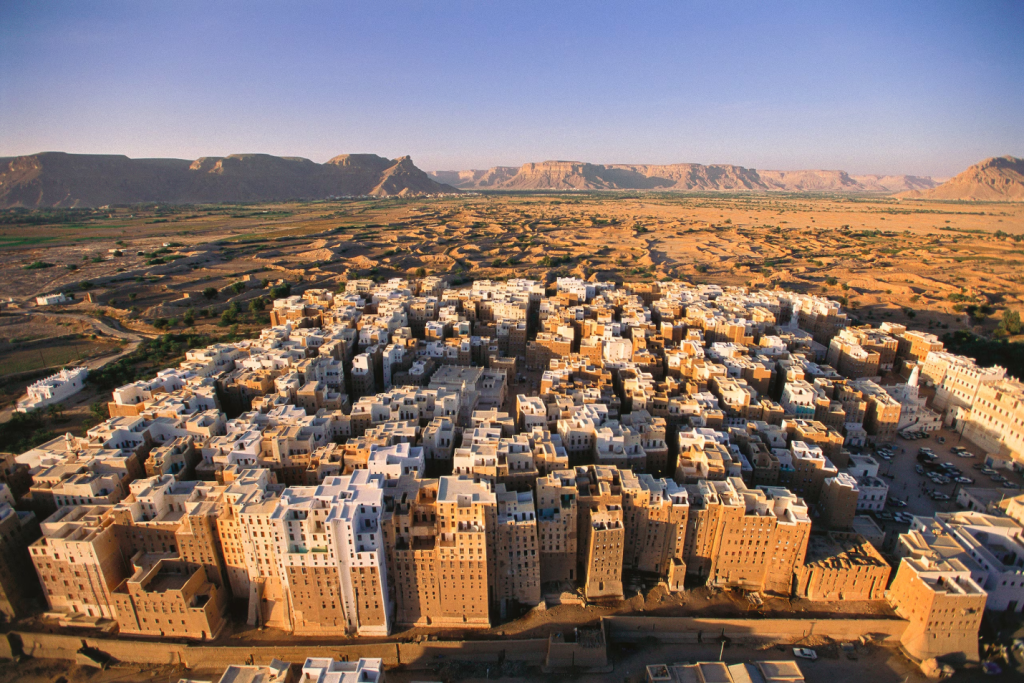
Flood, Fire, and Renewal
Disaster changed Shibam in the 16th century. In 1532–33, massive floods destroyed much of the city, forcing people to rethink how they lived. Instead of spreading out onto farmland, they built upward. Mudbrick towers rose inside the city walls, a practical response to limited space and danger.
Ground floors held animals and storage, middle floors housed families, and rooftops served as communal spaces and lookout posts. Shibam’s skyline wasn’t built for show — it was a vertical solution born of necessity, long before steel and glass towers existed.
The “Manhattan of the Desert”
Later travelers would dub Shibam the “Manhattan of the Desert.” UNESCO recognized it in 1982 as the oldest example of vertical urban planning, a model of human settlement uniquely adapted to its environment.
From afar, the towers look like skyscrapers; up close, they are a mosaic of patched mud, wooden beams, and narrow alleys funnelling desert winds. Unlike monuments, these towers are homes — still inhabited, still alive. They embody an architectural tradition that links Shibam not only to its Hadrami past but also to Yemen’s reputation as the cradle of mudbrick urbanism.
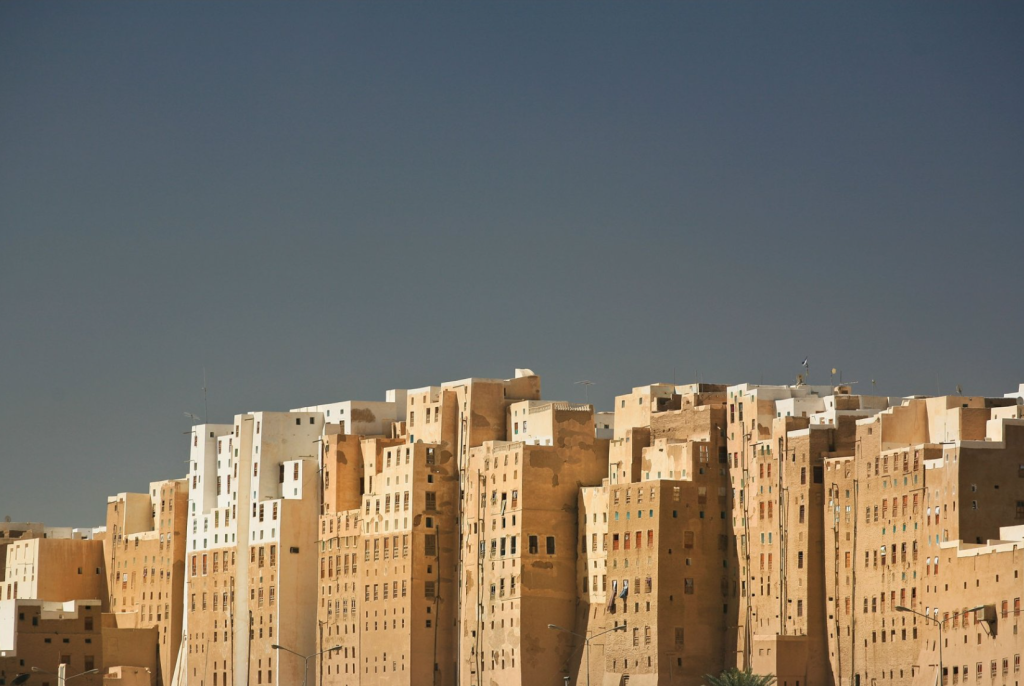
Fragility in Mud and Memory
The very material that makes Shibam unique also makes it vulnerable. Heavy rains can erode walls overnight; floods undermine foundations. A tropical storm in 2008 left dozens of houses collapsed or severely damaged. UNESCO has since listed Shibam as a World Heritage Site in Danger, warning that without constant care its survival is uncertain. Daily maintenance — replastering walls, repairing beams — is part of life here, but economic hardship has strained the city’s capacity to keep up.
The Keepers of the Towers
Despite hardship, Shibam’s masons continue their ancient craft. They mix soil, straw, and water to form adobe bricks; they pass techniques through apprenticeships, binding generations to the mud towers. These builders are both artisans and guardians, ensuring that the towers remain habitable and the city’s identity intact.
Conservation projects that work with them — using local skills and materials — have the greatest chance of success, because in Shibam, repair is not restoration in the traditional sense. It is much more than that.
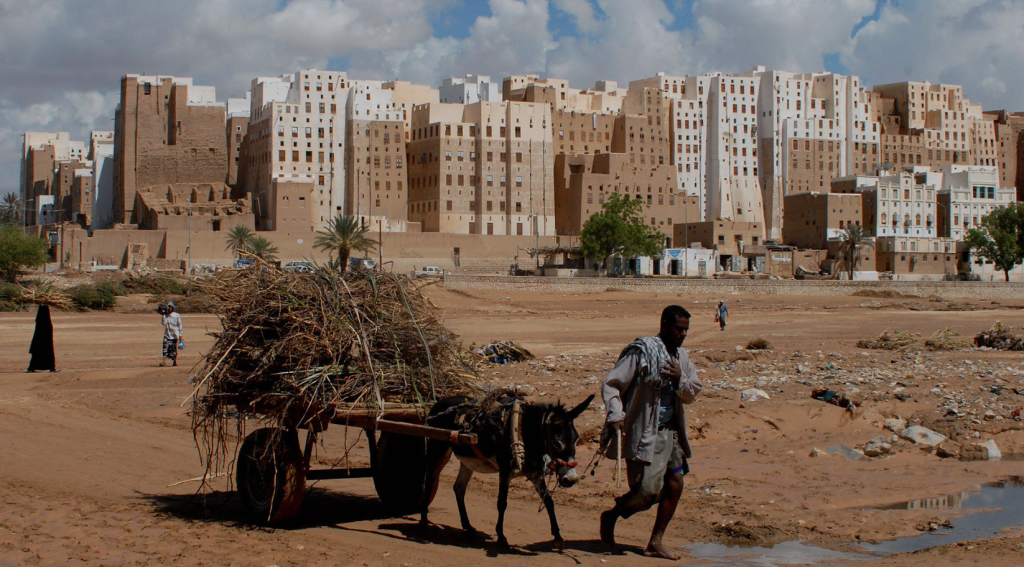
Why Shibam Matters
Shibam’s significance is twofold: it was once the capital of Hadramaut, the center of an ancient South Arabian kingdom tied to incense and empire; and it remains a living model of vertical urbanism, centuries ahead of its time. Protecting Shibam is therefore more than architectural preservation — it is safeguarding a cultural memory that links Yemen to the broader story of civilization.
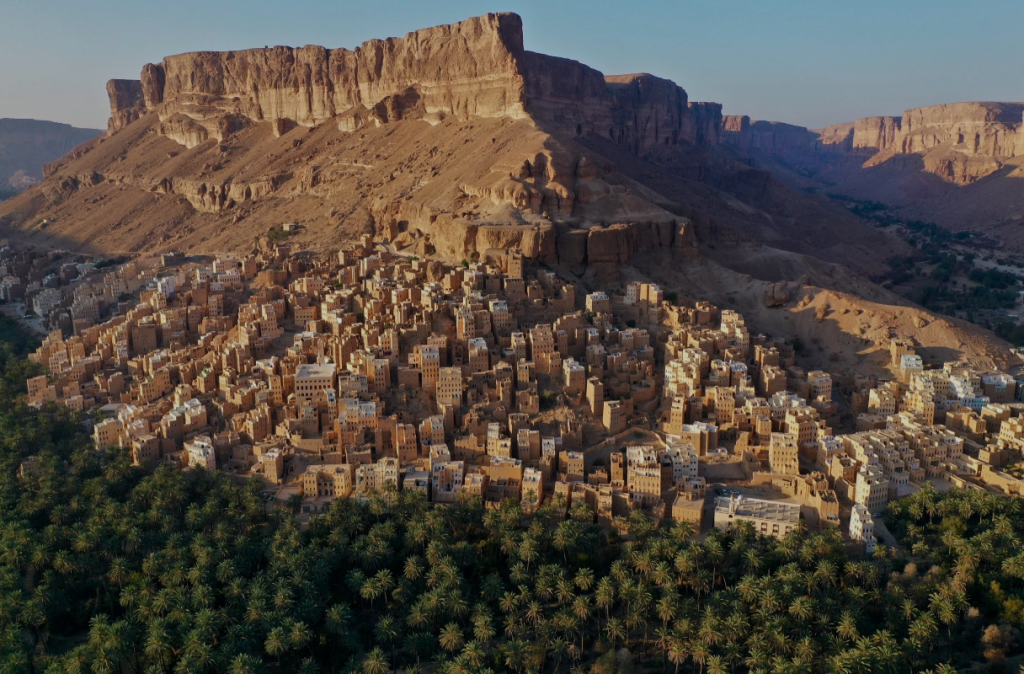
A Lesson for the Future
The mud towers of Shibam stand as a paradox: fragile yet enduring, vulnerable yet resilient. Their survival depends not on permanence but on care, season after season. That same principle applies to cultural heritage itself: it lasts only if people choose to protect it.
WE ALSO SAID THIS: Don’t Miss… 10 Things You Probably Didn’t Know About Yemen


